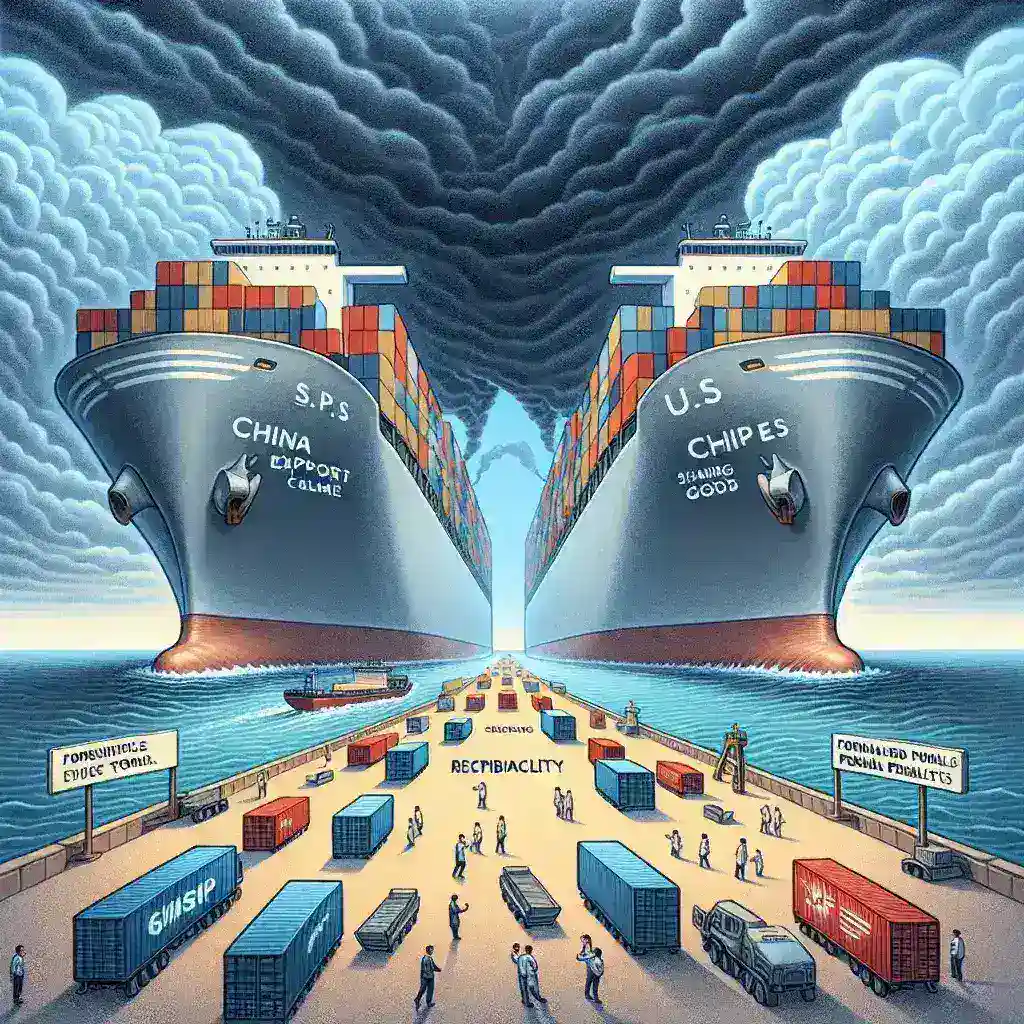Introduction
The global semiconductor industry is at a critical juncture, with geopolitical tensions shaping its future. As China contemplates formal penalties on U.S. chip firms, understanding how export ceilings and reciprocity might evolve is essential for stakeholders. This article delves into the current landscape, historical context, and future ramifications of such actions.
Understanding Export Ceilings
Export ceilings refer to the maximum quantity of goods that can be exported from one country to another within a specific timeframe. In the semiconductor industry, these ceilings can dramatically impact trade relationships and market dynamics. With China being a crucial player in the global supply chain, any restrictions imposed on U.S. chip manufacturers could ripple through the industry.
Historical Context
The semiconductor race between the U.S. and China has deep historical roots. Since the 1980s, the U.S. has dominated the design and production of advanced chips. However, China’s investment in technology has accelerated its capabilities, leading to increased competition. In 2018, the U.S. imposed tariffs on Chinese goods, which prompted retaliatory actions from China. Such trade conflicts have set the stage for current tensions.
Current Landscape of U.S.-China Relations
As of late 2023, U.S.-China relations continue to be fraught with challenges, particularly in technology and trade. The Biden administration has taken steps to limit China’s access to advanced semiconductor technology, citing national security concerns. In contrast, China is keen on developing its semiconductor industry to reduce reliance on foreign technology.
The Potential for Export Ceilings
If China formalizes penalties on U.S. chip firms, export ceilings could be one of the first measures implemented. Such ceilings would limit the quantity of U.S. chips that could be exported to China, hampering the ability of companies like Intel, Qualcomm, and NVIDIA to operate in one of their largest markets. This could lead to significant losses and potential layoffs in the U.S. tech sector.
Implications for the Global Market
The introduction of export ceilings could also have broader implications for the global semiconductor market. Other countries that rely on U.S. technology may face increased costs and disruptions in their supply chains. Additionally, China may ramp up its domestic production capabilities, further intensifying the competition.
Reciprocity in Trade Relations
Reciprocity refers to the practice of exchanging mutual benefits in trade agreements. In the context of U.S.-China relations, if China imposes penalties on U.S. chip firms, the U.S. may respond with its own set of restrictions, creating a tit-for-tat scenario.
How Reciprocity Might Evolve
As tensions escalate, the concept of reciprocity could manifest in various ways:
- Tariffs on Imports: The U.S. could impose tariffs on Chinese semiconductor products, increasing their cost and making American products more competitive.
- Export Controls: Similar to the actions taken against Huawei, the U.S. might expand its export controls to prevent certain Chinese firms from accessing advanced technology.
- Investment Restrictions: The U.S. could restrict Chinese investments in sensitive technology sectors, further curbing China’s technological ambitions.
Pros and Cons of Reciprocity
While reciprocity can serve as a bargaining tool, it also has its drawbacks:
- Pros:
- Strengthening National Security: By limiting access to advanced technology, the U.S. can protect its national security interests.
- Encouraging Domestic Production: Increased tariffs may encourage domestic companies to invest in local manufacturing.
- Cons:
- Escalation of Trade Wars: Reciprocal measures can lead to an all-out trade war, harming both economies.
- Global Supply Chain Disruptions: The semiconductor industry is interconnected; restrictions could have a widespread negative impact.
Future Predictions
Looking ahead, how might the semiconductor landscape change if China formalizes penalties on U.S. chip firms?
Increased Domestic Investment in China
China is likely to boost its investments in domestic semiconductor production. The government has already outlined ambitious plans to become self-sufficient in chip production. This move could result in the emergence of new players in the semiconductor space, increasing competition for U.S. firms.
Shift in Global Supply Chains
Global supply chains will inevitably shift in response to export ceilings and penalties. Companies may diversify their sourcing strategies to mitigate risks. Nations in Southeast Asia, such as Vietnam and Taiwan, may benefit as firms seek alternatives to China.
Technological Innovation
With increased competition, both U.S. and Chinese firms may double down on innovation. Investments in research and development (R&D) will become paramount as companies strive to maintain their competitive edge. This could lead to breakthroughs in semiconductor technology that reshape the industry.
Cultural Relevance
The ongoing tensions between the U.S. and China are not just economic; they resonate culturally as well. The relationship between these two nations shapes global perceptions and influences international collaboration in technology. The semiconductor sector is a microcosm of these larger dynamics, reflecting the blend of cooperation and competition.
Conclusion
As China considers formal penalties on U.S. chip firms, the potential evolution of export ceilings and reciprocity will play a crucial role in shaping the future of the semiconductor industry. Stakeholders must remain vigilant, adapting to changes and navigating the complexities of this rapidly evolving landscape. The outcome will not only affect the U.S. and China but will also reverberate throughout the global economy, influencing technology, trade, and international relations for years to come.

